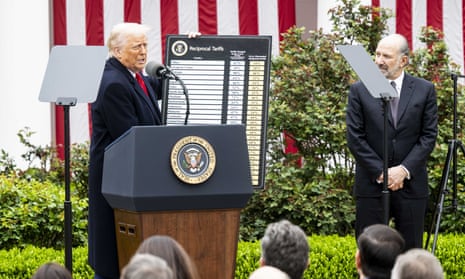The United States has recently announced a 17% tariff on goods imported from Zambia, effective April 9, 2025. This decision is part of a broader trade policy adjustment by the U.S. government, and it is expected to have a significant impact on Zambia’s economy, trade, and business sector.
What is a Tariff?
A tariff is a tax imposed by a government on goods imported from another country. The purpose of a tariff is usually to protect local industries from foreign competition, raise government revenue, or influence trade policies. When a tariff is applied, it makes imported goods more expensive in the market where they are sold. This can reduce demand for those goods and make it harder for exporters to compete.
For example, if a Zambian company exports coffee to the United States, and the cost per kilogram is $5, a 17% tariff means an additional $0.85 per kilogram is added as tax. As a result, American buyers may look for cheaper alternatives, reducing sales for Zambian exporters.
What Goods Does Zambia Export to America?
Zambia exports several products to the United States, and these could be affected by the new tariff. Some of the major exports include:
Precious Stones: Zambia is a major producer of emeralds and other gemstones. In 2023, Zambia exported precious stones worth approximately $3.48 million to the U.S.
Refined Copper: Zambia is one of the world’s largest copper producers. Exports of refined copper to the U.S. were valued at about $37.76 million in 2023.
Coffee, Tea, and Spices: Zambia is expanding its coffee industry, with exports to the U.S. totaling around $7.89 million in 2023.
Textiles and Apparel: Some Zambian businesses export fabric and clothing materials to the U.S., often benefiting from trade agreements.
Agricultural Products: Zambia exports honey, groundnuts, and other agricultural products, which could also be impacted by the tariff.
Does This Have an Impact on Zambia?

Yes, this 17% tariff can affect Zambia’s economy and businesses in several ways:
- Reduced Competitiveness: Zambian products will become more expensive in the U.S. market. If buyers can find cheaper alternatives elsewhere, they may reduce their purchases from Zambia.
- Lower Export Revenues: With a decline in demand, businesses that rely on U.S. exports may earn less money, reducing the country’s overall income from trade.
- Impact on Jobs: Industries that depend on exports to the U.S., such as mining, agriculture, and manufacturing, may face reduced demand, leading to job losses.
- Pressure on Foreign Exchange: Zambia earns foreign currency from exports. If fewer goods are sold to the U.S., the country could experience foreign exchange shortages, affecting the value of the Kwacha.
- Slower Economic Growth: If major businesses and industries suffer losses due to the tariff, Zambia’s overall economic growth could slow down.
What Should the Government Do?
The Zambian government can take several steps to address the challenges posed by this tariff:
- Negotiate with the U.S.: Zambia should engage in diplomatic discussions with the U.S. government to seek a reduction or exemption from the tariff, possibly through trade agreements.
- Diversify Export Markets: Instead of relying heavily on the U.S., Zambia should explore new markets in Africa, Europe, and Asia to sell its goods.
- Support Local Industries: The government can provide financial assistance, training, and policies that help businesses reduce production costs and improve competitiveness.
- Encourage Value Addition: Instead of exporting raw materials like copper, Zambia can invest in industries that refine and manufacture finished products, which fetch higher prices and are less vulnerable to tariffs.
- Improve Trade Policies: By enhancing trade agreements with other countries, Zambia can secure better export conditions for its goods in different markets.
What Should Zambian Business People Do?
Zambian businesses, particularly those that export goods to the U.S., need to adapt to this new reality. Here are some actions they can take:
- Find Alternative Markets: Companies should expand their reach to regions such as China, India, and the European Union, where tariffs may be lower.
- Enhance Product Quality: If Zambian products are superior in quality, they can still attract buyers despite higher prices.
- Cut Costs and Improve Efficiency: Businesses should look for ways to reduce operational expenses, making their products more competitive.
- Invest in Processing and Manufacturing: Instead of selling raw materials, businesses should invest in processing to add value and justify higher prices.
- Strengthen Local Demand: By encouraging Zambians to buy locally produced goods, businesses can reduce their reliance on exports.
The 17% tariff imposed by the U.S. presents a challenge for Zambia’s exporters, especially in industries like copper, gemstones, and coffee. However, by exploring new markets, improving product value, and negotiating better trade terms, Zambia can overcome this challenge and continue to grow its economy. The government and business community must work together to find solutions and ensure that Zambia remains competitive in the global market.

